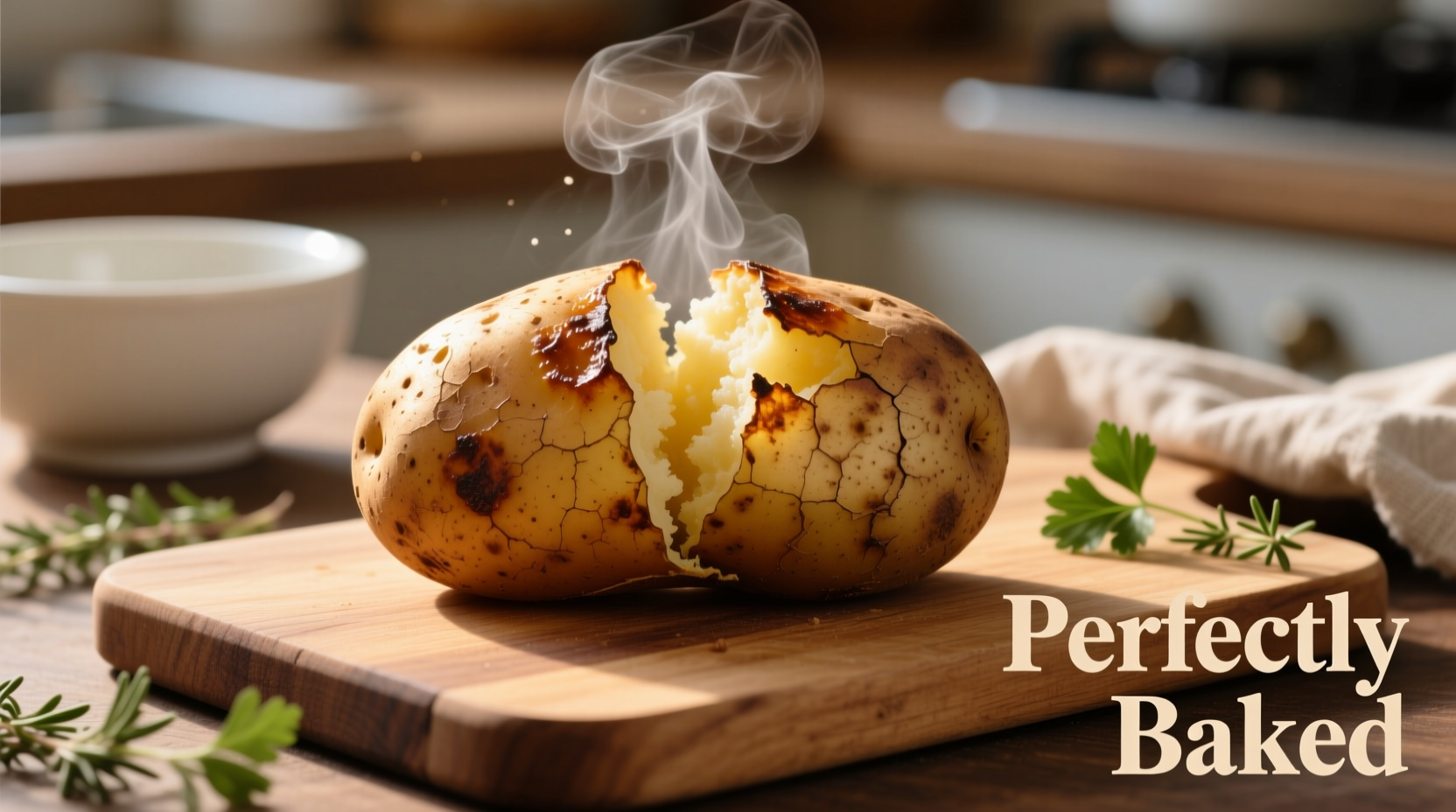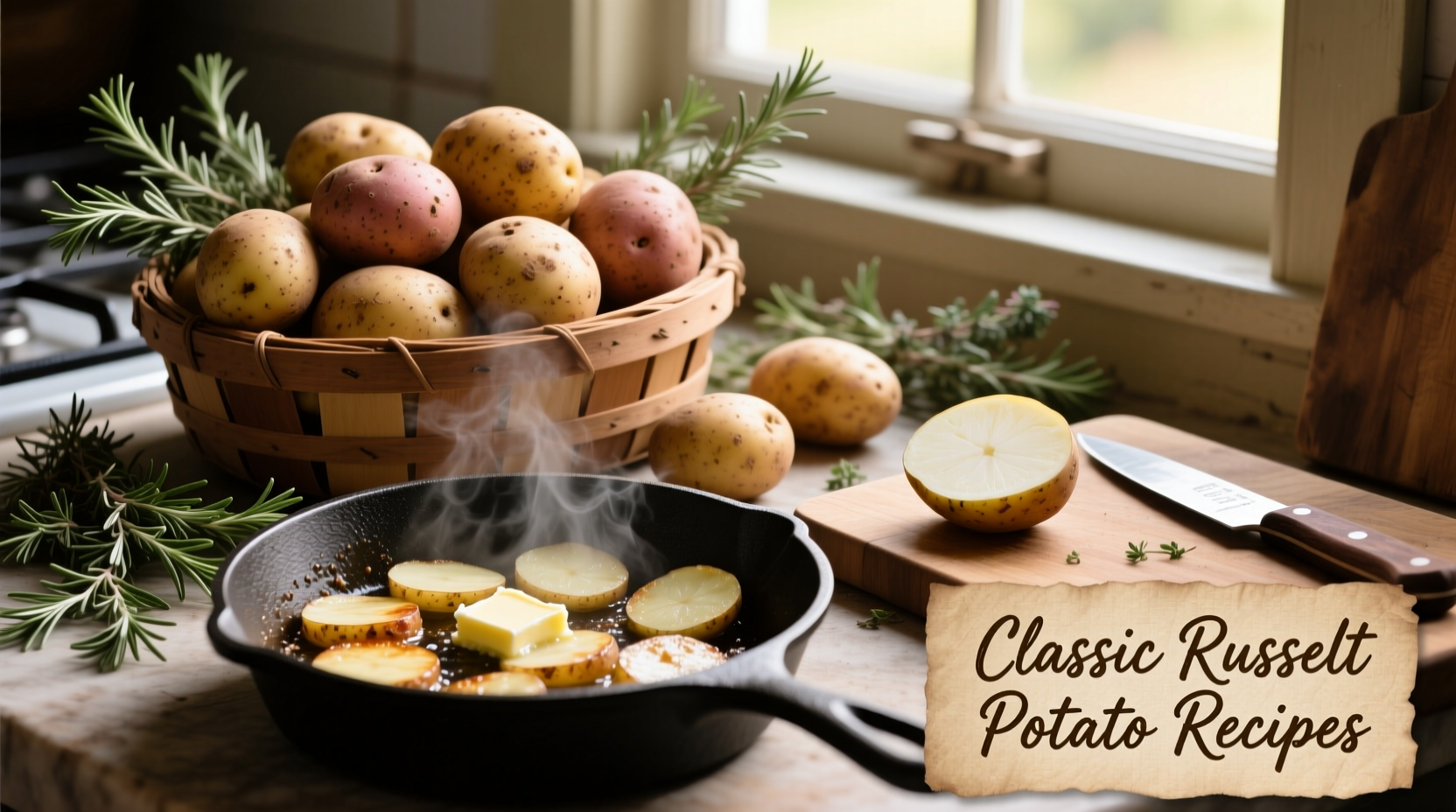Discover why professional chefs reach for russet potatoes when creating classic dishes that require that signature light, airy texture. With their thick skin and low moisture content, russets transform into golden, crispy exteriors while maintaining a cloud-like interior—making them the undisputed champion for baked potatoes, French fries, and creamy mashed potatoes.
Why Russet Potatoes Outperform Other Varieties
Understanding what makes russet potatoes special helps you leverage their unique properties. Unlike waxy potatoes that hold their shape well in salads, russets contain about 20-22% starch—nearly 5% more than Yukon Golds. This higher starch content creates that beloved fluffy texture when baked or mashed.
| Potato Type | Starch Content | Best Cooking Methods | Texture When Cooked |
|---|---|---|---|
| Russet | 20-22% | Baking, mashing, frying | Fluffy, light |
| Yukon Gold | 15-17% | Boiling, roasting, mashing | Buttery, creamy |
| Red Potato | 12-14% | Salads, steaming, roasting | Firm, waxy |
This starch-to-moisture ratio makes russets perfect for dishes where you want maximum fluffiness. According to the USDA Agricultural Research Service, russet potatoes have been selectively bred since the late 19th century specifically for their superior baking qualities, with the Russet Burbank variety developed in 1872 becoming the industry standard.
Mastering Russet Potato Cooking Techniques
Before diving into recipes, understand these critical preparation steps that make the difference between good and exceptional russet potato dishes:
- Don't wash before storing - Excess moisture promotes spoilage; store in cool, dark place
- Always pierce skins - Prevents bursting during baking by allowing steam to escape
- Soak cut potatoes - Removes excess surface starch for crispier fries
- Start in cold water - For mashed potatoes, prevents uneven cooking

5 Essential Russet Potato Recipes You Need to Try
Classic Baked Russet Potato
The foundation of russet potato cooking—simple but perfected. Choose potatoes of similar size for even cooking.
Ingredients
- 4 medium russet potatoes
- 2 tbsp olive oil
- 1 tsp kosher salt
- Optional toppings: sour cream, chives, bacon bits
Method
- Preheat oven to 400°F (200°C)
- Scrub potatoes clean and dry thoroughly
- Pierce each potato 4-5 times with fork
- Rub with olive oil and sprinkle with salt
- Place directly on oven rack with baking sheet below to catch drips
- Bake 55-65 minutes until tender when pierced
- Cut open and fluff interior with fork before adding toppings
Crispy Oven Fries with Perfect Texture
Achieve restaurant-quality fries without deep frying. The key is proper soaking and high-heat roasting.
Pro Tip
After cutting, soak potatoes in cold water for 30 minutes to remove excess starch. This critical step prevents fries from becoming soggy and promotes maximum crispiness.
Fluffy Mashed Potatoes That Impress
The secret to cloud-like mashed potatoes starts with choosing the right potato variety and continues with proper technique.
Avoid This Common Mistake
Never use a food processor or blender on mashed potatoes—this releases too much starch, creating a gluey texture. Always mash by hand for the fluffiest results.
When Not to Use Russet Potatoes
While versatile, russets aren't ideal for every application. Understanding these context boundaries prevents cooking disasters:
- Potato salads - Russets fall apart too easily; use red or Yukon Gold instead
- Stews and soups - They disintegrate quickly; waxy potatoes maintain shape
- Gratin dishes - Their high starch content makes them too crumbly
For dishes requiring potatoes to hold their shape, choose varieties with lower starch content. The University of Idaho Extension Service confirms that russet potatoes' high starch content makes them unsuitable for applications where structural integrity matters.
Storage Tips for Maximum Freshness
Proper storage extends russet potatoes' shelf life and maintains quality:
- Store in cool, dark, well-ventilated place (45-50°F / 7-10°C ideal)
- Never refrigerate—cold temperatures convert starch to sugar
- Keep away from onions which release gases that accelerate sprouting
- Use within 2-3 weeks for best quality
Troubleshooting Common Russet Potato Problems
Even experienced cooks encounter issues with russet potatoes. Here's how to fix them:
- Soggy baked potatoes - Oven temperature too low; increase to 400°F minimum
- Mushy mashed potatoes - Overworked or used wrong potato type
- Brown spots inside - Normal in larger potatoes; cut away affected areas
- Sprouting - Potatoes stored too warm; use immediately











 浙公网安备
33010002000092号
浙公网安备
33010002000092号 浙B2-20120091-4
浙B2-20120091-4